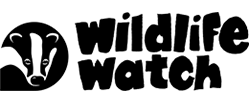Search
Water vole by Terry Whittaker/2020VISION
Chwilio
Sea mat
These mat like growths found on kelp and seaweed are actually colonies of tiny individuals animals.
Cotton spinner
Although they might not look it, sea cucumbers like this one belong to the Echinoderm group and are therefore closely related to starfish and sea urchins
Grey squirrel
The grey squirrel was introduced into the UK in the 1800s. It provides an easy encounter with wildlife for many people, but can be damaging to woodlands and has contributed to the decline of the…
Lady fern
One of the prettiest hardy ferns, the lady fern is delicate and lacy, with ladder-like foliage. It makes a good garden fern, providing attractive cover for wildlife.
My spa day
For Lucy, the wind and salty spray of the Atlantic Ocean is more relaxing than any spa treatment and being surrounded by amazing wildlife, like Common Dolphins, Minke Whales and Harbour Porpoise…
Glöynnod byw gwych
Lindys cŵl
Daisy anemone
It is easy to be confused by these flower-like animals with flowery names! The ‘daisy’ anemone is one of the larger UK anemone species!
Hornwrack
Hornwrack is often found washed up on our beaches, with many believing that it is dried seaweed. In fact, it is a colony of animals!
Stork's-bill
The bill-shaped seed pods of Common Stork's-bill explode when ripe, sending the seeds flying! This low-growing plant has pretty pink flowers and can be seen on grasslands and coastal sands.…
Twin fan worm
Worms in the sea are anything but dull and this fan worm, resembling a Catherine wheel, is a perfect example of the intricate beauty these animals possess.
